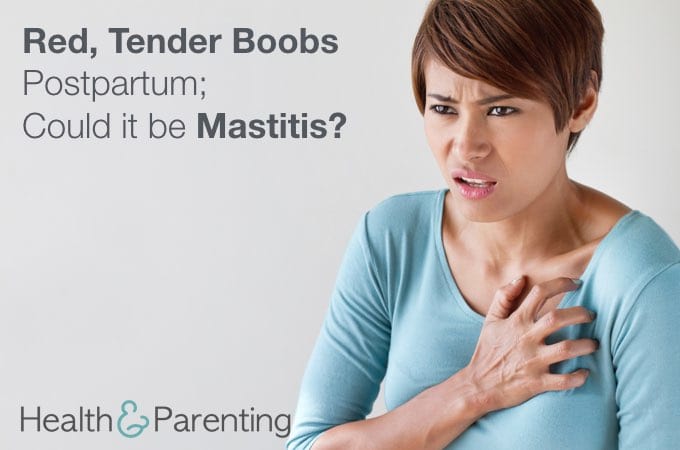Your breasts may have been achy since the day you found out you were pregnant. Now that you had your baby and your milk came in, it may be more of the same; swollen, sore breasts. But how do you know when painful breasts are more than typical postpartum aches?
Mastitis occurs when breast tissue becomes inflamed and painful. It can develop due to an infection or from a blocked duct. An infection can occur when bacteria from your baby’s mouth enters your body through a cracked nipple. Mastitis from a blocked milk duct may develop if there is a build-up of milk. It can occur if your breasts do not empty fully during feedings.
Up to about 1 in 10 women who breastfeed develop mastitis. Although mastitis can develop anytime during breastfeeding, it’s more common during the first month after you deliver.
Symptoms of Mastitis
One of the first symptoms of mastitis is feeling a little rundown. In fact, you may feel flu-like symptoms several hours before you notice breast changes. Mastitis often only affects one breast not two, and additional symptoms include breast swelling and tenderness.
You may also notice a small, hard lump that hurts when you touch it. The affected breast may be red and warm to the touch. Fever and chills may also occur in some women with mastitis.
It’s important to contact your healthcare provider if you think you have mastitis. It is usually treated easily without an interruption in breastfeeding. In most cases, mastitis clears up in a few days.
How do I Treat Mastitis?
If you have mastitis, you might wonder if it’s OK to continue to breastfeed. Rest assured, breastfeeding is still recommended while you have mastitis. In fact, frequent emptying of your breasts may help clear the inflammation.
In some instances, your health care provider may prescribe antibiotics. Although medication prescribed may enter your breastmilk, in most cases, antibiotics used to treat mastitis are not harmful to your baby. But speak to your doctor if you have any concerns.
Mastitis can make breastfeeding somewhat painful. But it’s important to continue to keep milk flowing and prevent a buildup. Applying a warm compress to your sore breast a few minutes before you breastfeed may help reduce discomfort. In addition, applying cold packs for about twenty minutes at a time on and off throughout the day may decrease discomfort. Talk to your doctor about taking over the counter anti-inflammatory medication, which may also reduce pain.
There are a few things you can do to decrease your chances of developing mastitis in the future. For example, make sure your baby is latching on correctly during each feeding. Also, it may help to vary breastfeeding positions from one feeding to another to promote complete emptying of the breasts. If your baby does not empty each breast while feeding, use a pump to express leftover milk. Don’t hesitate to speak with your doctor or a lactation consultant if you have any breastfeeding concerns.
Other notes
If you have a red sore, don’t automatically assume it’s Mastitis. If your symptoms don’t go away with antibiotics, you should follow up with your doctor. Trust your gut, especially when it comes to your health. It can be so easy to fall into such a pattern of taking care of everyone else that you forget to pay attention to what is going on with your own body.
You can read Heidi’s story here: Inflammatory Breast Cancer: What You Need to Know
Written by MaryAnn DePietro @writerlady34
This information is not intended to replace the advice of a trained medical doctor. Health & Parenting Ltd disclaims any liability for the decisions you make based on this information, which is provided to you on a general information basis only and not as a substitute for personalized medical advice. All contents copyright © Health & Parenting Ltd 2016. All rights reserved.










